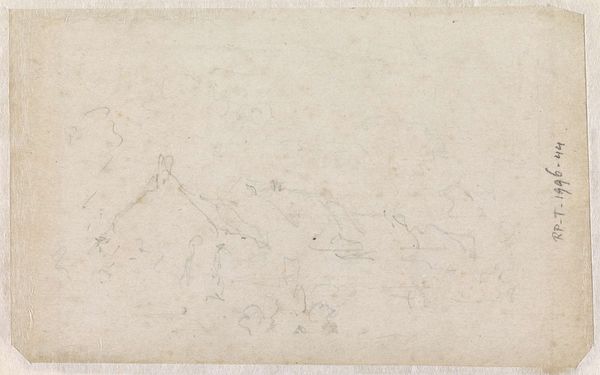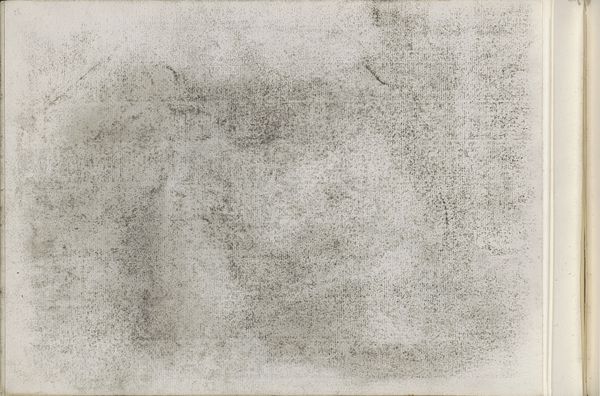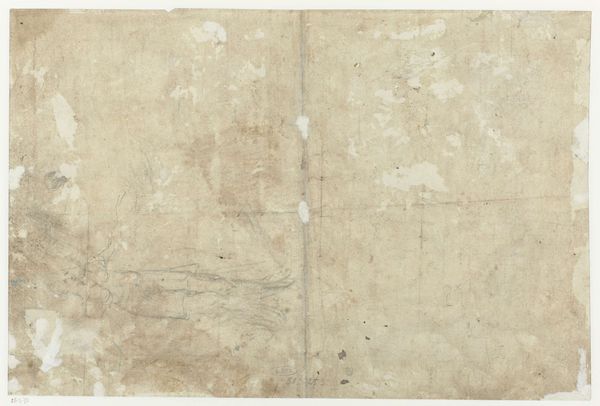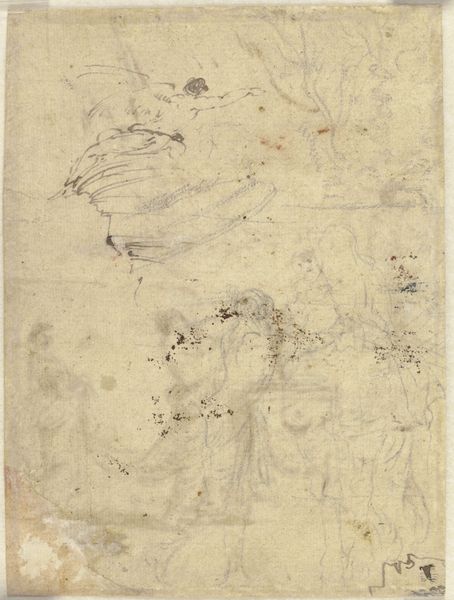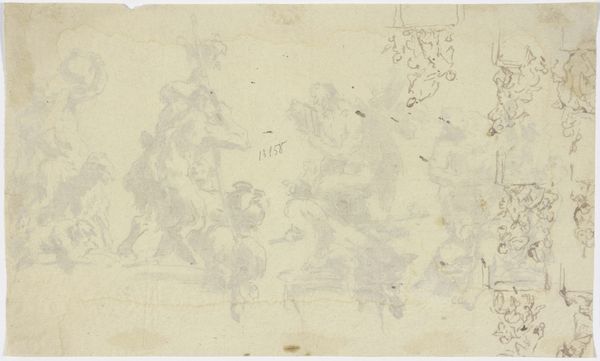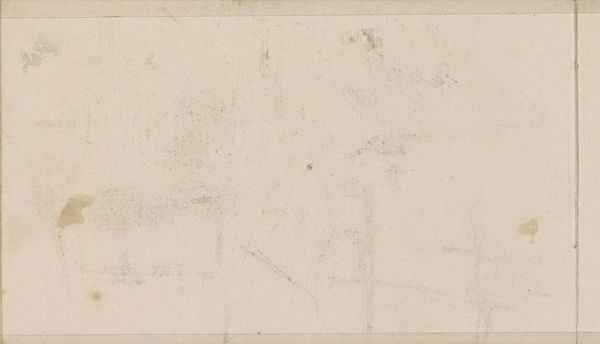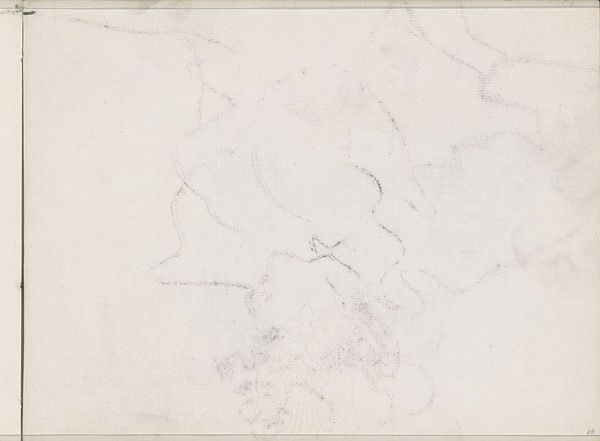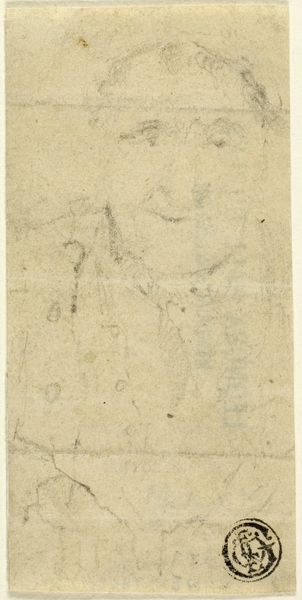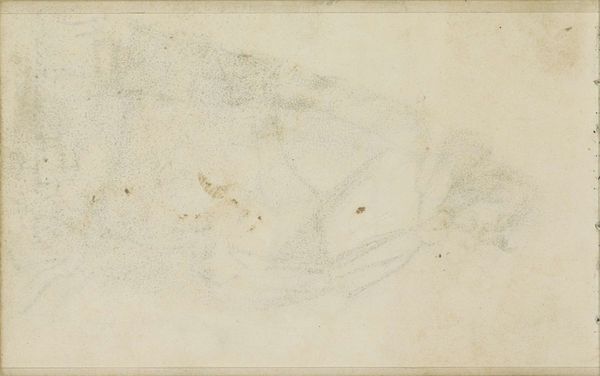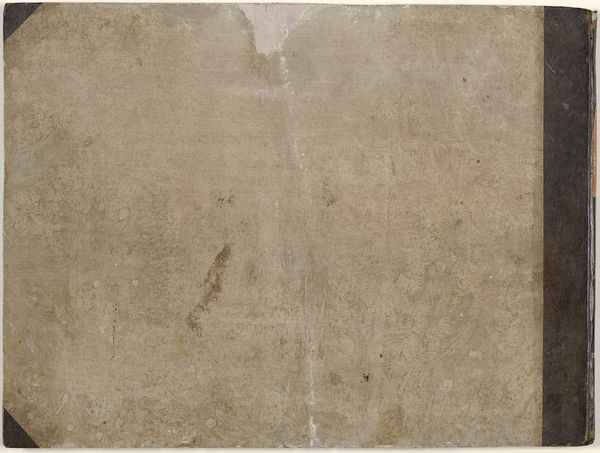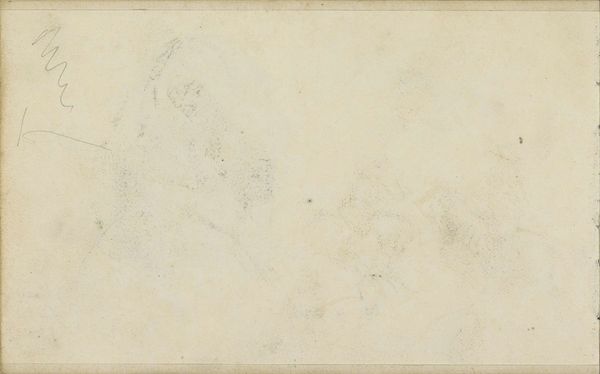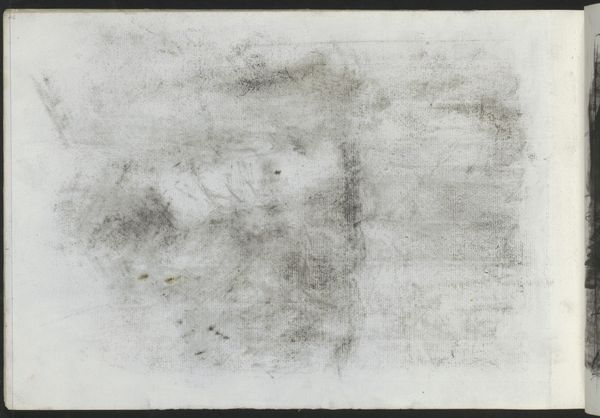
drawing, paper, pencil
#
drawing
#
impressionism
#
figuration
#
paper
#
pencil
Dimensions: 100 mm (height) x 131 mm (width) (bladmaal)
Editor: Here we have Auguste Rodin's "Quick Sketch of a Body Fragment," created between 1878 and 1881. It’s a pencil drawing on paper. There’s something raw about it. What do you see in this piece that might not be immediately apparent? Curator: Let’s consider the materiality of this drawing. Rodin used humble materials: paper and pencil. This aligns with the burgeoning shift in artistic practice during the late 19th century, where the "how" becomes as important as the "what". The sketch itself, its hasty creation, its potential to be both a study and a final work – speaks volumes. Editor: So, it's about more than just a body fragment? Curator: Absolutely. Rodin’s drawing is a record of artistic labor. The act of sketching, typically a preliminary stage, is presented as a thing of value. Think about how this challenges the traditional academic hierarchy where only finished, polished works were valued. Is Rodin elevating the process itself? Is the "fragment" as much about the *making* as it is the figure itself? Editor: That’s fascinating. It feels much more modern when you look at it that way. It isn’t just a drawing; it’s a document of thought and action. Curator: Precisely. This shifts our focus. It encourages us to analyze the social conditions that gave rise to such a radical re-evaluation of art’s materials and process. Where is the line drawn, then, between craft and art? Editor: I see it now. The piece forces us to confront the means of production and reconsider traditional ideas of value and artistic creation. Thanks for shedding light on that! Curator: My pleasure! By exploring the materiality and process, we uncover deeper meaning and the ways artistic conventions evolve.
Comments
No comments
Be the first to comment and join the conversation on the ultimate creative platform.
